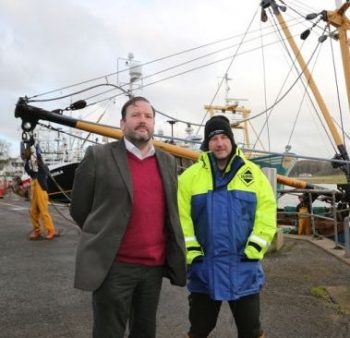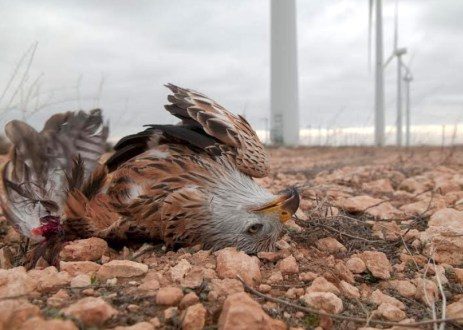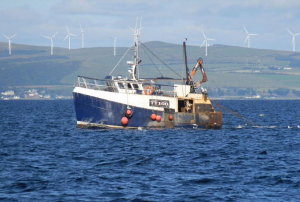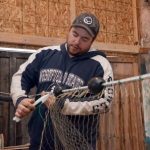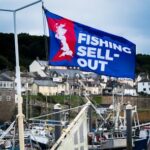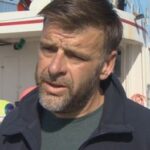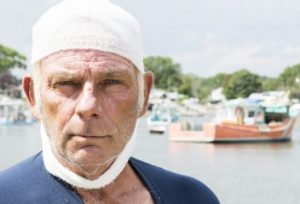Tag Archives: offshore wind turbines
VIEWPOINT: Offshore Wind Turbines – Trouble on the Horizon?
 The state’s actions to facilitate a project that will provide no electricity to Delaware and makes one wonder how disruption to our fragile offshore and onshore ecosystem will benefit the citizens of Delaware. As in the contract, US Wind will “monitor” the damage to the fragile ecosystem of the Inland Bays. This in itself is an admission to damage such as changes to nutrient levels, pollutants from construction degrading water quality, damage to fish, shellfish, bay grasses, and other marine life that most believe will not help heal the fragile ecosystem of the Inland Bays but further add to the detrimental changes for minimal actual benefit to Delawareans. Additionally, wind turbines broadcast underwater low-frequency vibrations and create large electromagnetic fields around the miles-long high-voltage transmission lines. more, >>CLICK TO READ<< Representative Jeff Hilovsky 10:41
The state’s actions to facilitate a project that will provide no electricity to Delaware and makes one wonder how disruption to our fragile offshore and onshore ecosystem will benefit the citizens of Delaware. As in the contract, US Wind will “monitor” the damage to the fragile ecosystem of the Inland Bays. This in itself is an admission to damage such as changes to nutrient levels, pollutants from construction degrading water quality, damage to fish, shellfish, bay grasses, and other marine life that most believe will not help heal the fragile ecosystem of the Inland Bays but further add to the detrimental changes for minimal actual benefit to Delawareans. Additionally, wind turbines broadcast underwater low-frequency vibrations and create large electromagnetic fields around the miles-long high-voltage transmission lines. more, >>CLICK TO READ<< Representative Jeff Hilovsky 10:41
Fishermen keep fighting against offshore turbines
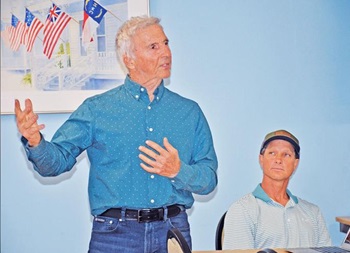 It’s a fishing story that’s not being told. That is how some members of the North Carolina For-Hire Captain’s Association (NCFHCA) feel about what they see as a threat offshore wind turbines would pose to the local fishing industry, economy, wildlife and environment. “No matter how we feel or whatever, the feds are shoving this down our throat and it doesn’t matter what we say,” said Capt. Cane Faircloth, a NCFHCA board member who handles media, public relations and marketing for the association of about 300 people. The subject is dear to the heart of Dr. Nick Degennaro of Southport, who has worked in the offshore industry for 30 years and has a doctorate in commercial engineering from the University of Rhode Island. He is opposed to offshore wind energy. This issue is so important to him, “because it’s going to destroy the ocean,” he said. Degennaro said areas that have offshore wind turbines become “dead zones” for fishing. more, >>click to read<< 10:48
It’s a fishing story that’s not being told. That is how some members of the North Carolina For-Hire Captain’s Association (NCFHCA) feel about what they see as a threat offshore wind turbines would pose to the local fishing industry, economy, wildlife and environment. “No matter how we feel or whatever, the feds are shoving this down our throat and it doesn’t matter what we say,” said Capt. Cane Faircloth, a NCFHCA board member who handles media, public relations and marketing for the association of about 300 people. The subject is dear to the heart of Dr. Nick Degennaro of Southport, who has worked in the offshore industry for 30 years and has a doctorate in commercial engineering from the University of Rhode Island. He is opposed to offshore wind energy. This issue is so important to him, “because it’s going to destroy the ocean,” he said. Degennaro said areas that have offshore wind turbines become “dead zones” for fishing. more, >>click to read<< 10:48
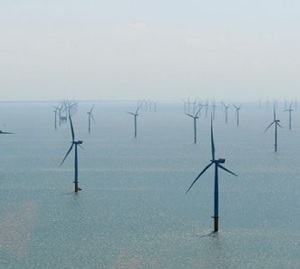
Government Watchdog Agrees to Probe Effects of Offshore Wind Turbines
Following a request from a group of Republican congressmen, the Government Accountability Office (GAO), an independent watchdog, has agreed to conduct an investigation into the environmental effects of offshore wind turbines, which the Biden administration has increasingly supported. The effort was spearheaded by Representative Chris Smith (R., N.J.), who sent a letter to the GAO’s comptroller requesting information about the effects in the North Atlantic Planning Area, which extends from Maine to New Jersey. Of particular interest is whether wind turbines will cause economic and marine-life problems affecting commercial fishing. >click to read< 07:38
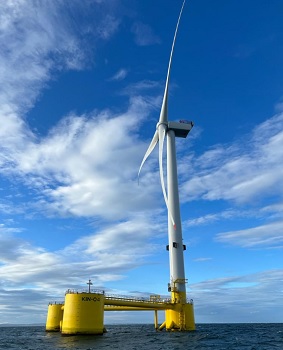
Kotek calls for pause on offshore wind turbines
Gov. Tina Kotek is joining a chorus of voices, including tribes and commercial fishermen, urging the Biden administration to slow down its push for floating wind farms in the Pacific Ocean off the state’s southern coast. Regulators are now preparing a draft report outlining where in the areas turbines may be built safely while minimizing harm to fisheries and marine life. Members of the West Coast fishing industry, however, claim that the bureau is ignoring their concerns. They worry that floating offshore wind farms will displace boats from highly productive fishing grounds and could irreversibly damage the California Current ecosystem. >click to read< 09:20

Maine: Lobstermen support better science to help right whales
The historical record of Maine lobstermen is clear.One right whale entangled in 2004 was disentangled and swam free. No right whale death has ever been attributed to Maine lobster gear. Gov. Janet Mills and our congressional delegation, without partisanship, acknowledge Maine lobstermen are not a threat to the right whale population. Despite never having seen one in the 50 years I’ve fished; I’ve made multiple changes to make my gear more whale friendly. These changes have been time-consuming, expensive, and potentially dangerous to me and my crew but resulted in less rope in the water. >click to read< 11:52

Congressman Van Drew Joins Chairman Westerman on Natural Resources in Leading Letter to GAO Requesting Offshore Wind Study
“BOEM and offshore wind companies have engaged in a sloppy and rushed environmental review process—ignoring national security concerns, ignoring concerns from our fishermen, and ignoring impacts on our ocean life—all in the name of ‘climate change,'” said Congressman Van Drew. “We must continue to demand transparency throughout this process. Without diligent oversight, we risk not only our natural resources and local economies, but the livelihoods of the constituents we serve as well. I thank Chairman Westerman for his support in uncovering the real impacts these offshore wind turbines will have on our coast, including the economic impact on pertinent industries and the effects on sensitive environments.” >click to read< 10:31
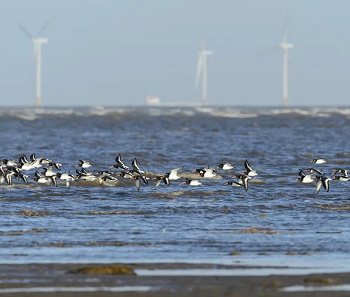
Nothing Green Here! Offshore wind farm turbines could number 30,000 globally by 2030
The price of offshore wind turbines,,, Turbines are up to 70% steel, which is made from recycled or newly extracted iron, which is processed from ores. These ores are removed from rocks by blasting causing disruption to the natural environment, and often from sites with cultural significance to indigenous people. The mined ores are then transported by large trucks, crushed, refined, processed and shipped. Whether it’s emissions from machines processing and transporting the ores or air and water contaminants released during extraction, mining creates pollution. Converting the iron into steel also contributes to climate change. Globally, the iron and steel industry is responsible for 11% of CO₂ emissions. Steel plates are shipped and then rolled into curved sections, people and machines weld these to form long tubes, which are loaded onto vessels, transported to sea and assembled,,, processes which are largely powered by fossil fuels. >click to read< 16:05
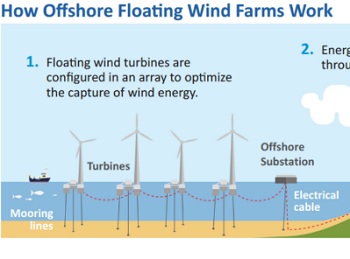
Biden opens (condemns) California coast to floating offshore wind turbines – “We believe it’s shortsighted,”
The announcement, endorsed by Gov. Gavin Newsom, moves forward the prospect for wind farms in two areas about 20 miles off the coast of Morro Bay and Humboldt County. Turbines roughly 600 to 700 feet tall would be built on floating platforms because the water is too deep to anchor them to the sea floor. “We believe it’s shortsighted,” said Mike Conroy, executive director of the Pacific Coast Federation of Fishermen’s Associations, “Floating offshore wind technology is unproven. It hasn’t been deployed on a large industrial scale yet. We have no idea what the environmental impacts will be off our coast.” >click to read< 13:16
BilloTheWisp – The Obscene Profitability of Wind Power
Due to the pandemic and the virtual shutdown of the national economy the day-ahead wholesale price of electricity has plummeted. But one group of producers has no worries. The subsidy payments received by generators classed as “renewable” dwarf these market prices. Here I’ll just deal with the most outrageous and costly i.e. windfarms. Today almost all wind-farms are subsidised by the now defunct Renewable Obligation scheme (RO). This was replaced in 2017 with Contracts for Difference(CfD) which is arguably even more costly and inflexible than its predecessor. ,, The companies running these wind-farms are over-joyed at their profitability. Truly when comes to acting as money making machines all other unsubsidized generation capacity pales by comparison. >click to read< >Wrecking the Seabed with Offshore Wind, Part1-5<19:56
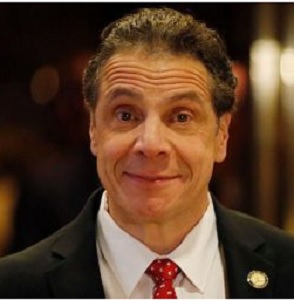
Offshore Wind Farms are new danger for Lake Erie through Governor Cuomo’s Green New Deal
The proposal to install offshore wind turbines on the Eastern side of Lake Erie was brought to my attention during the annual Woodlawn Beach cleanup last September. Since then I have learned much about how negative this would be for Lake Erie and the people and wildlife that depend on it, the protests around the world against these types of projects and the media paywalls that are stifling our knowledge of them. Global developers have called the Great Lakes the “Saudi Arabia of Wind,” and surprisingly, the Sierra Club and other environmental groups that oppose Peace Bridge reconstruction and shoreline development endorse the turbines. Can you see the dollar signs? Can you trust a global industry with our fresh water? By Mary Henson, >click to read< 14:22
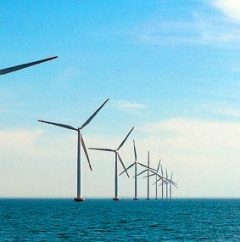
Displacement of fishermen? Offshore Wind Could Have Major Adverse Impact on Commercial Fisheries
The Bureau of Ocean Energy Management’s (BOEM) draft supplemental environmental review for Vineyard Wind off the coast of Martha’s Vineyard in Massachusetts indicates that offshore wind farms could have a major “adverse” impact on commercial fisheries.,, The study also notes concern that offshore wind turbines and transmission cables could entangle with fishing vessels and gear, and that wind farms could result in the temporary or permanent displacement of fishermen in certain areas. >click to read< 13:02
N E looks to Europe to assess environmental impacts of offshore energy facilities – “In the next 20 years there will be more than 2,000 wind turbines off the coastline,” “We think there’s lots of potential for environmental benefit of putting offshore aquaculture together with offshore renewable — from an environmental point of view, but also from an economic point of view,” she said. “Sharing space is going to be the only way I think we can move forward in this industry,,, >click to read<

Seabrook: New Hampshire Fishermen deserve voice in offshore wind plans
Selectmen are abandoning a task force looking at offshore wind turbines in the Gulf of Maine, demanding their local fishermen have more direct inclusion.,, Fishing communities like in Seabrook have expressed strong concerns about the turbines’ impact on the ocean and the fish they harvest for a living.,, They said in their letter to the OSI they wanted fishermen to have a direct seat on the task force, which is comprised of elected officials from New Hampshire, Massachusetts and Maine. >click to read< 18:08

Collision Course: Offshore Wind Turbines Present New (Unnecessary) Mortal Danger for Trawlermen
The fishermen who work off America’s Atlantic coast, are furious over plans to spear thousands of industrial wind turbines into their fishing grounds, destroying not only the seabed (the source of their income and prosperity), but wrecking their fishing grounds, forever. Trawlermen off the New Jersey coast have already told developers what they can do with their projects: Deepwater in Deep Trouble: Fishermen Tell Off-Shore Wind Farm Developers to F@*#K Off,,, >click to read< 08:21

Fisherman, conservationists want more research before developing wind farms
Before Humboldt County begins investing in offshore wind energy, local conservationists and fishermen say more research needs to be done to assess the projects’ local impacts. Harrison Ibach, president of the Humboldt Fishermen’s Marketing Association, said much of California’s waters are already closed to commercial fishing and the installation of wind turbines is going to further reduce the number of areas where fishermen can operate. “We can’t afford to lose any more grounds,” Ibach said. >click to read<07:49
Stakeholders Voice Concerns and Cautious Optimism About Offshore Wind Energy at McGuire-Hosted Hearing – click here to read<
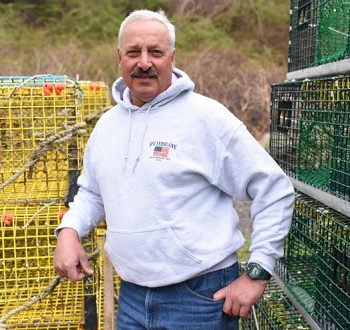
Sandwich lobsterman raises concerns about offshore wind farms
After 40 years in the business, Sandwich commercial lobsterman Marc Palombo foresees the presence of fog in the summer months as his biggest worry as he considers whether or not to navigate through the proposed swath of offshore wind turbines south of the Islands.,,,The Coast Guard has begun a study of vessel traffic — a Port Access Route Study, or PARS — in and around the seven offshore energy lease areas south of the Islands, off both Massachusetts and Rhode Island, to determine if any new vessel travel routes are necessary to improve navigational safety,,, >click to read<22:17
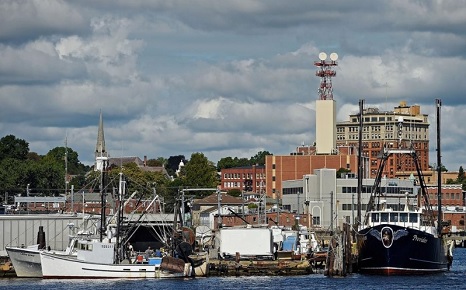
Don’t let wind industry disrupt fishing industry
As owner of Empire Fisheries, one of Connecticut’s largest commercial fishing companies, I testified recently at a hearing before the General Assembly’s Energy and Technology Committee on two bills (SB 875 and HB 7156) in support of the state’s plan to procure clean energy from offshore wind turbines in federal waters. While in support of the bills, I cautioned, as many other fishermen have, that any authorization from the state for procuring wind energy must first guarantee protections that keep fishermen, fish and the ecosystems they rely on, safe. >click to read<15:34

Wind Turbine Development and the future of fishing? Nils E. Stolpe/FishNet USA
Let’s start with commercial fishing perspectives on wind farms in the North Sea: Seventeen fishing vessels docked in the centre of Amsterdam, a city that built its wealth and prosperity on the herring fishery. Between 600 and 700 fishermen from Holland and Belgium arrived in the city for a peaceful but highly visible protest that was followed by dozens of journalists.,,, In spite of the fact that in the U.S. our experience with producing electricity with offshore wind turbines is virtually nonexistent, we are apparently well on the way to committing billions of dollars to the effort – and most of that effort is going to be in the waters off New England and the mid-Atlantic. How much experience do we have with offshore wind turbines in the United States? >click to read<12:23
LI fishing grounds mapped as wind farm plans take shape
 More than a dozen Montauk fishermen have met with state officials to mark off vital fishing areas on a map that will help determine the best places for the hundreds of offshore wind turbines anticipated for the waters off Long Island. Led by the Long Island Commercial Fishing Association, the group included trawl-boat captains, lobstermen, gill netters and trappers, each determined to preserve their fishing grounds as plans for wind-energy farms take shape. New York State’s offshore wind plan foresees some 2,400 megawatts of wind-turbines in New York and surrounding waters. That is likely to translate to around 240 turbines. click here to read the story 18:49
More than a dozen Montauk fishermen have met with state officials to mark off vital fishing areas on a map that will help determine the best places for the hundreds of offshore wind turbines anticipated for the waters off Long Island. Led by the Long Island Commercial Fishing Association, the group included trawl-boat captains, lobstermen, gill netters and trappers, each determined to preserve their fishing grounds as plans for wind-energy farms take shape. New York State’s offshore wind plan foresees some 2,400 megawatts of wind-turbines in New York and surrounding waters. That is likely to translate to around 240 turbines. click here to read the story 18:49

Offshore Wind Faces Stiff Test From Hurricanes
As new offshore wind farms are built off the Northeast coast, a new report suggests that the current models of wind turbines may not withstand the most powerful of hurricanes. The study, by the University of Colorado Boulder, the National Center for Atmospheric Research and the U.S. Department of Energy, is intended to help the budding offshore wind industry as it expands into hurricane-prone regions, such as the East Coast. “We wanted to understand the worst-case scenario for offshore wind turbines, and for hurricanes, that’s a Category 5,” said Rochelle Worsnop, lead author and a graduate researcher in the University of Colorado’s Department of Atmospheric and Oceanic Sciences (ATOC). click here to read the story 10:58






